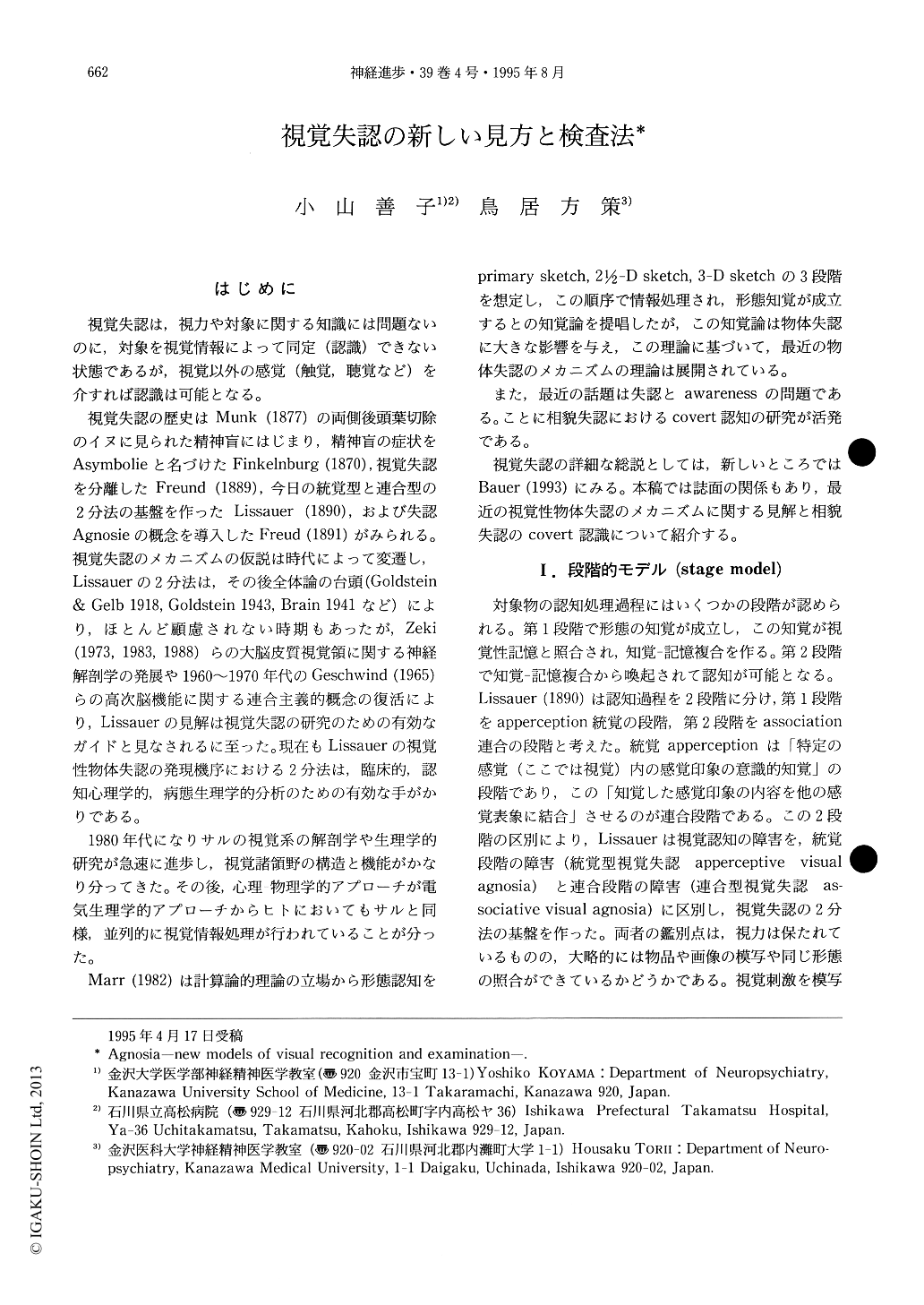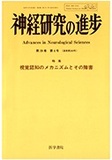Japanese
English
- 有料閲覧
- Abstract 文献概要
- 1ページ目 Look Inside
はじめに
視覚失認は,視力や対象に関する知識には問題ないのに,対象を視覚情報によって同定(認識)できない状態であるが,視覚以外の感覚(触覚,聴覚など)を介すれば認識は可能となる。
視覚失認の歴史はMunk(1877)の両側後頭葉切除のイヌに見られた精神盲にはじまり,精神盲の症状をAsymbolieと名づけたFinkelnburg(1870),視覚失認を分離したFreund(1889),今日の統覚型と連合型の2分法の基盤を作ったLissauer(1890),および失認Agnosieの概念を導入したFreud(1891)がみられる。視覚失認のメカニズムの仮説は時代によって変遷し,Lissauerの2分法は,その後全体論の台頭(Goldstein & Gelb 1918,Goldstein 1943,Brain 1941など)により,ほとんど顧慮されない時期もあったが,Zeki(1973,1983,1988)らの大脳皮質視覚領に関する神経解剖学の発展や1960~1970年代のGeschwind(1965)らの高次脳機能に関する連合主義的概念の復活により,Lissauerの見解は視覚失認の研究のための有効なガイドと見なされるに至った。現在もLissauerの視覚性物体失認の発現機序における2分法は,臨床的,認知心理学的,病態生理学的分析のための有効な手がかりである。
The hypotheses on mechanism of visual agnosia have been changed with the years. It has been well known that Lissauer proposed a distinction between apperceptive and associative visual agnosia based upon impaired stage of recognition process. Lissauer's dichotomy is practically useful and is still applied to organize the presentation of clinical materials. Although Lissauer's model has been historically important, recent analysis of normal and impaired perception has raised some questions about visual perception of several cases.

Copyright © 1995, Igaku-Shoin Ltd. All rights reserved.


